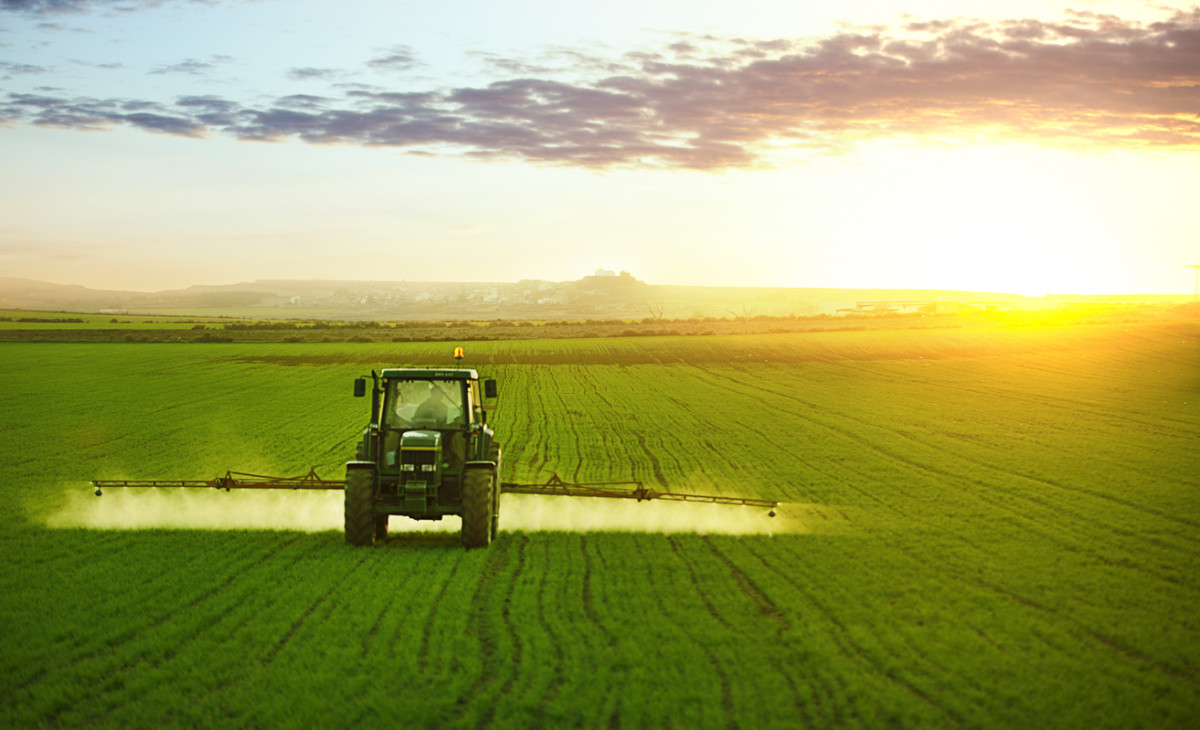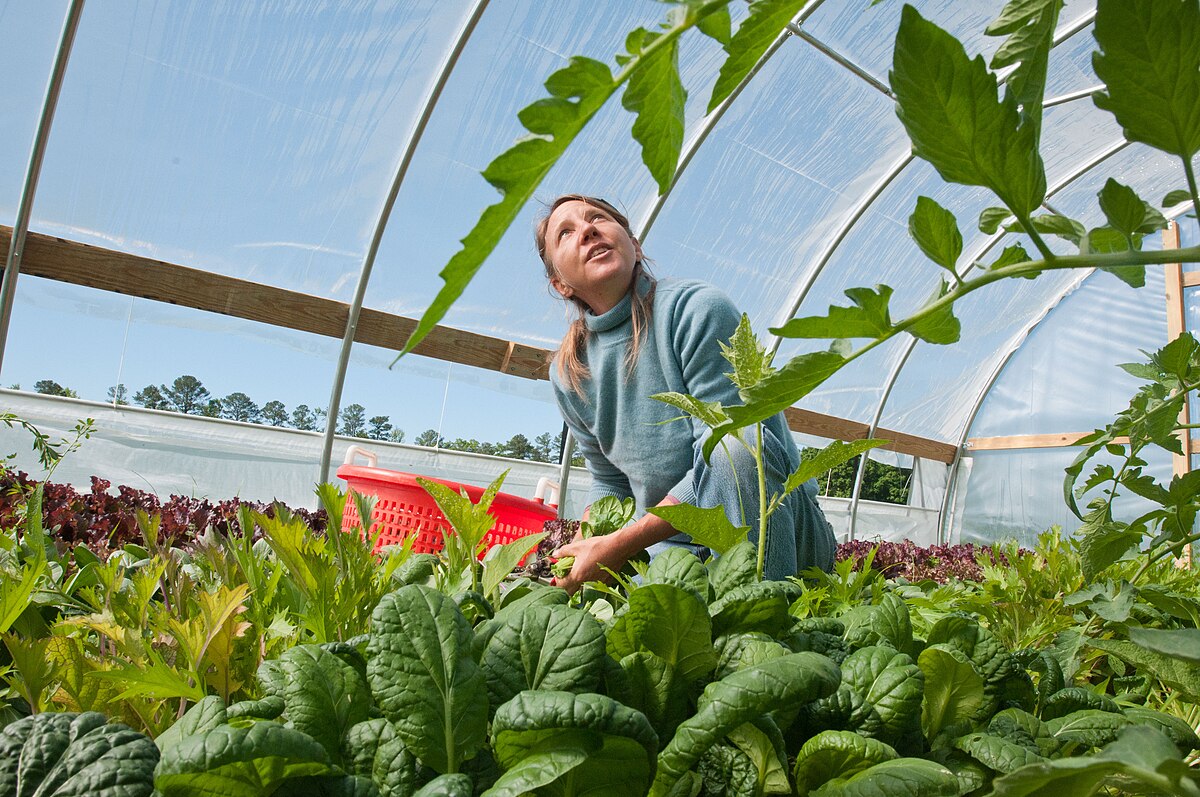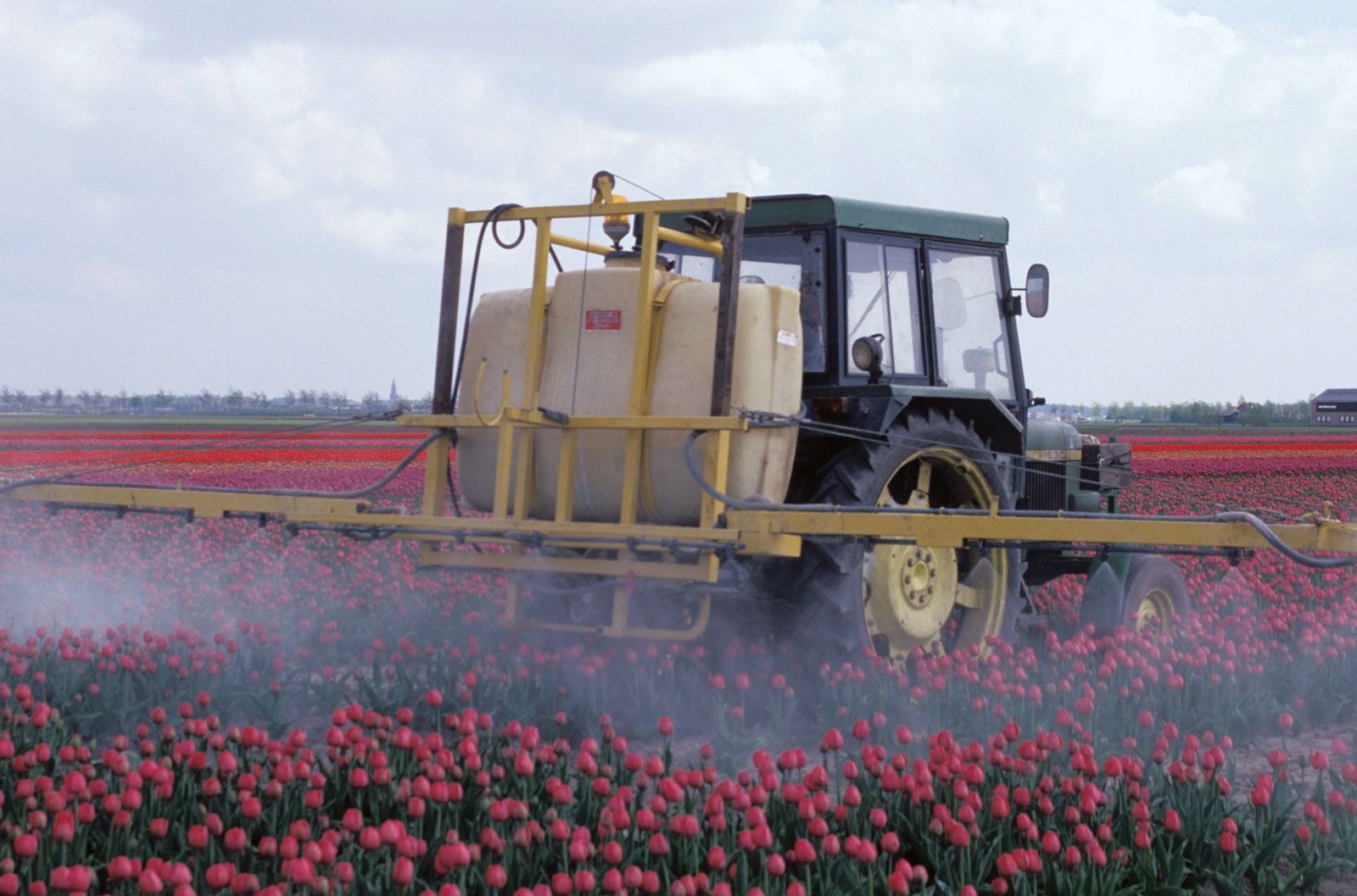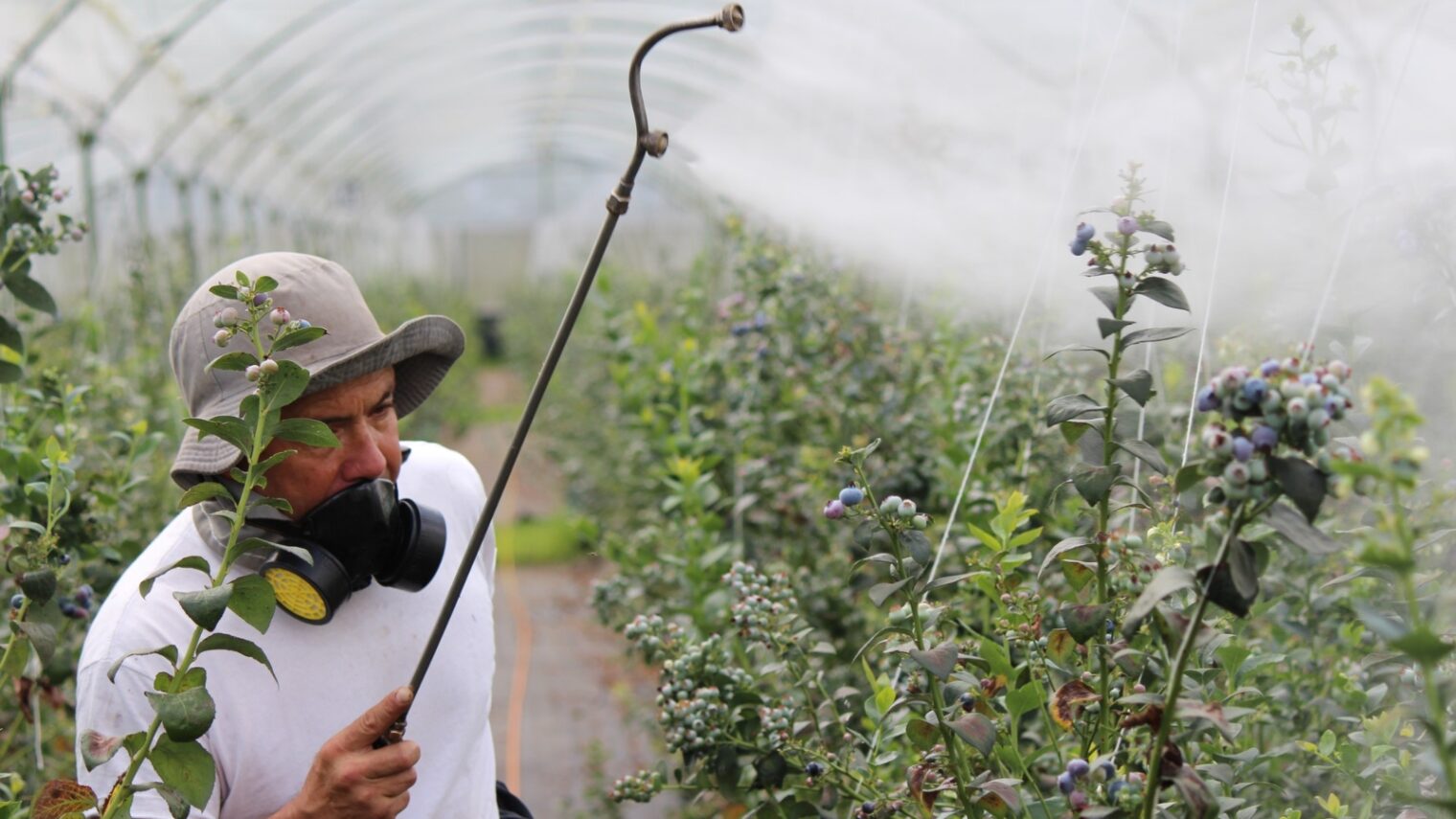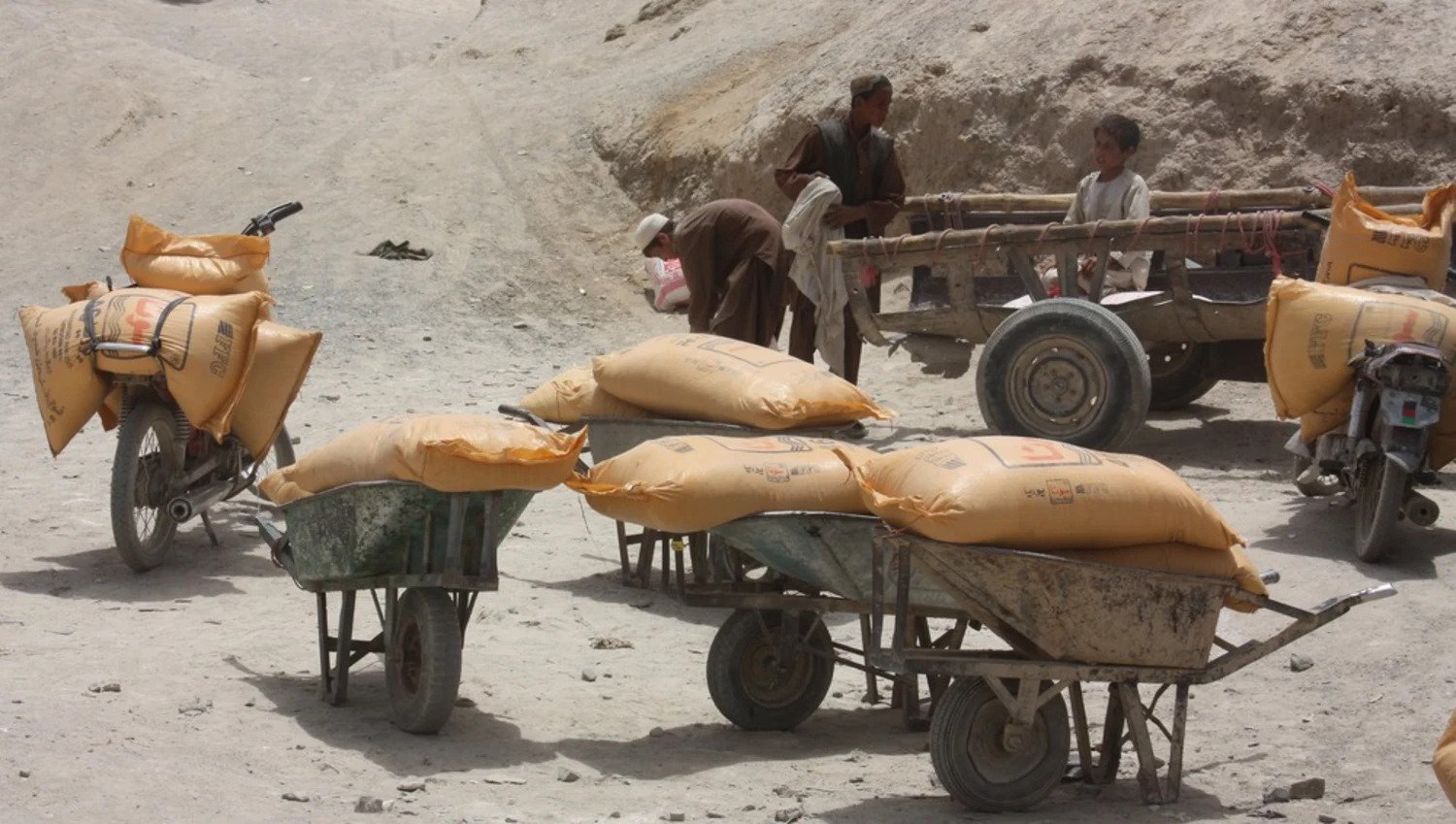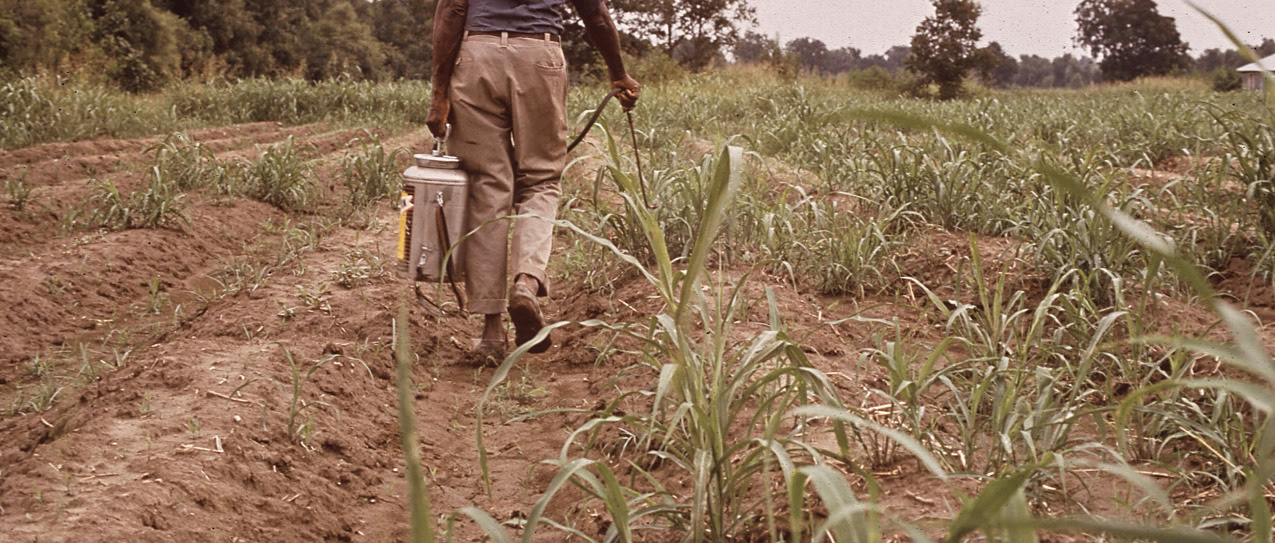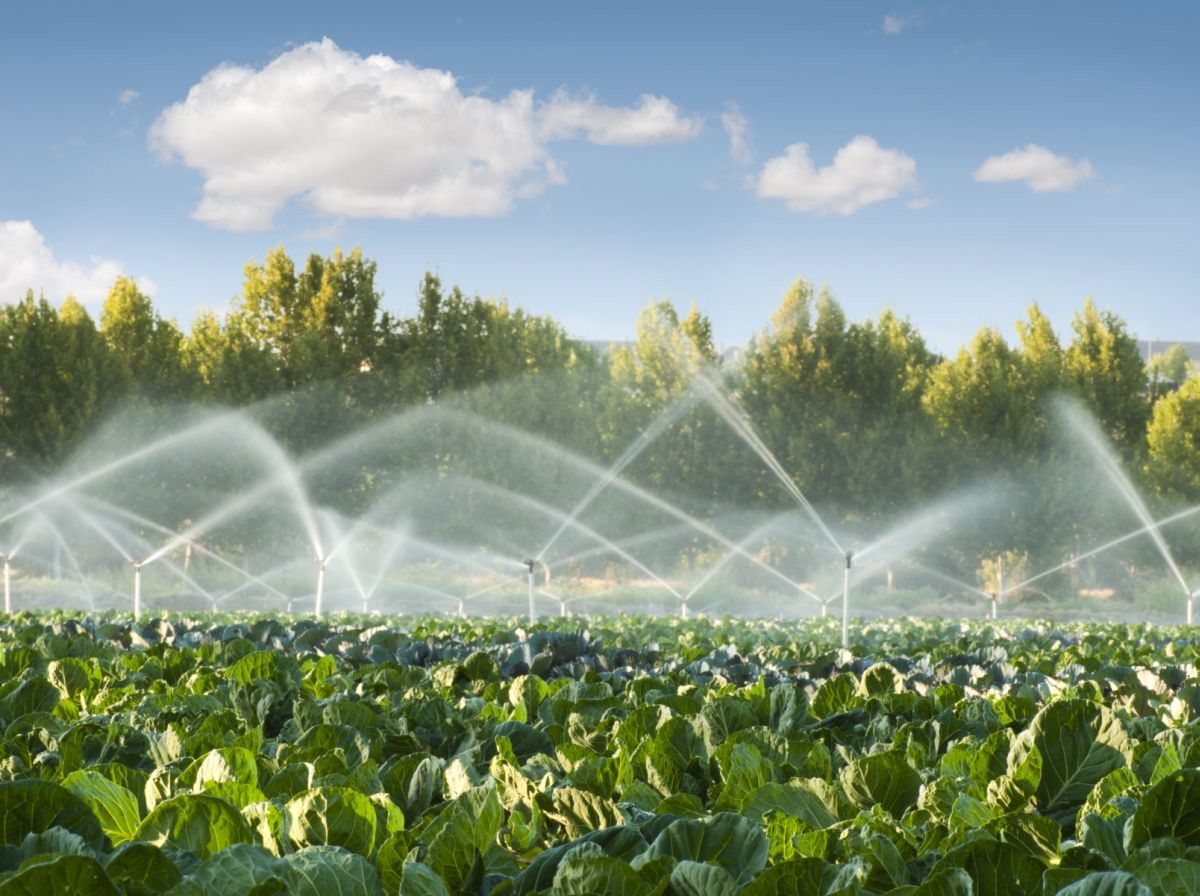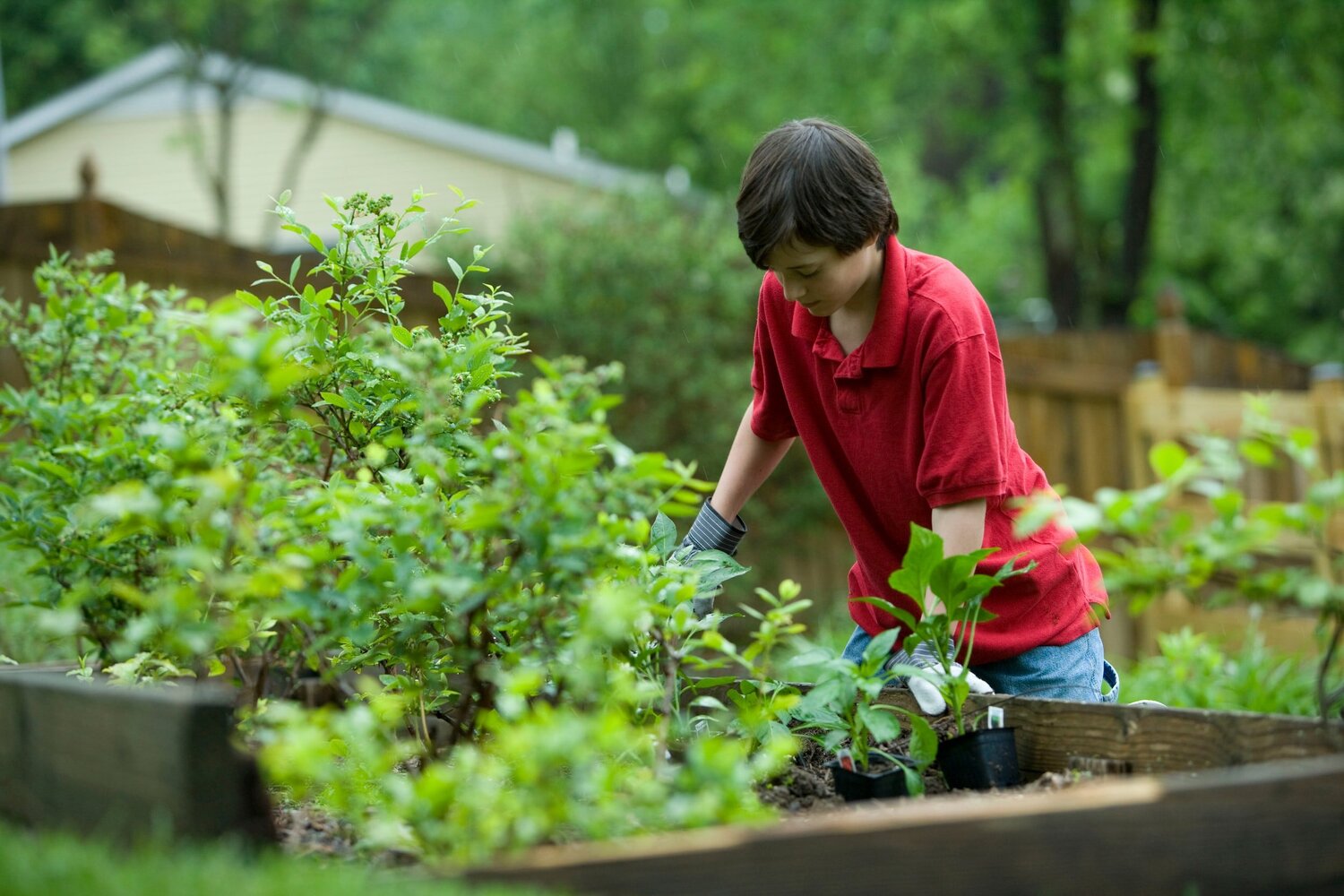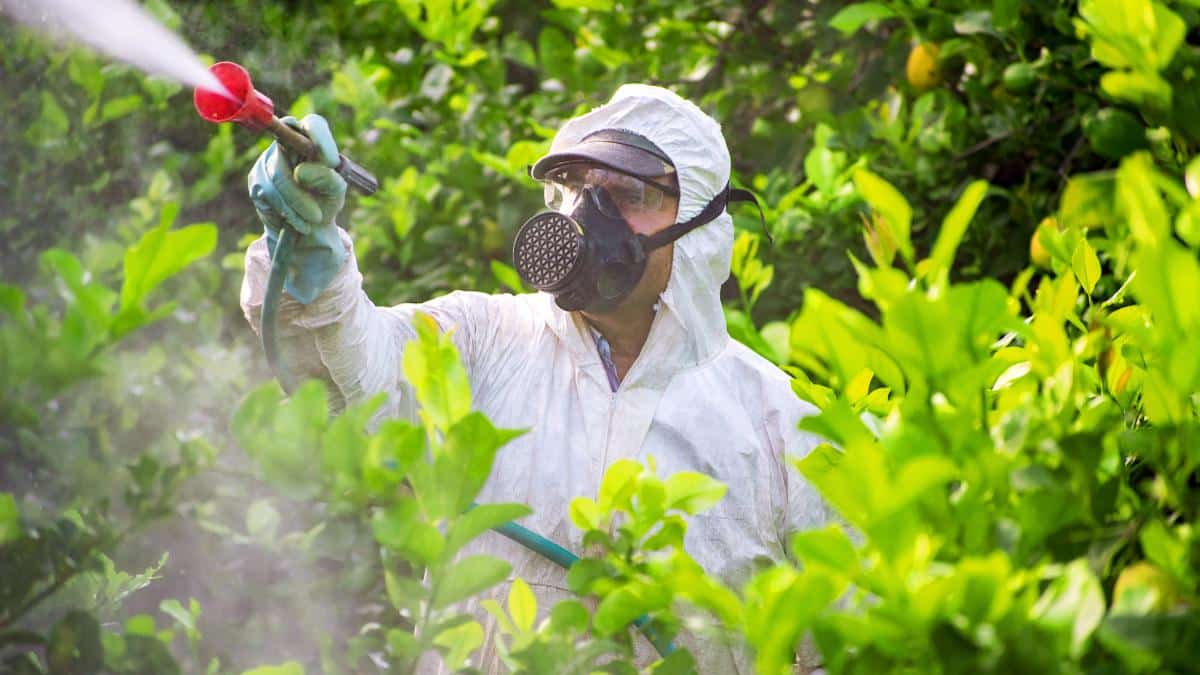Home>Gardening News and Trends>Latest News>Why Does The Use Of Pesticides And Herbicides Become Necessary With Monocultures?


Latest News
Why Does The Use Of Pesticides And Herbicides Become Necessary With Monocultures?
Modified: January 22, 2024
Discover the latest news on why the use of pesticides and herbicides has become necessary in monocultures. Stay informed with our insightful updates.
(Many of the links in this article redirect to a specific reviewed product. Your purchase of these products through affiliate links helps to generate commission for Chicagolandgardening.com, at no extra cost. Learn more)
Table of Contents
Introduction
Monocultures, the practice of growing a single crop species over a large area, have become increasingly common in modern agriculture. This approach offers several advantages, such as increased efficiency and higher yields. However, it also comes with its share of challenges, particularly in regards to pest and weed control.
Monocultures create a favorable environment for pests and weeds to thrive. When the same crop is grown on a large scale, it creates a predictable and abundant food source for pests, leading to population explosions. Similarly, weeds can easily adapt and spread in the absence of natural competitors, causing significant damage to crop yields.
To combat these issues, the use of pesticides and herbicides in monocultures becomes necessary. Pesticides are chemicals designed to kill or control pests, such as insects, rodents, and fungi. Herbicides, on the other hand, are used to kill or suppress unwanted plants, commonly known as weeds. These chemical interventions are aimed at reducing the damage caused by pests and weeds, ensuring optimal crop growth and maximizing yields.
While pesticides and herbicides provide effective short-term solutions for pest and weed control, their usage raises environmental concerns and long-term consequences. The indiscriminate use of chemicals can lead to water pollution, soil degradation, loss of biodiversity, and potential harm to human health.
Therefore, it is crucial to explore alternative approaches to pesticide and herbicide use in monocultures. These alternatives can involve sustainable farming practices, integrated pest management, crop rotation, biological controls, and the use of organic fertilizers and natural remedies.
In this article, we will delve into the reasons why pesticides and herbicides become necessary in monocultures, explore the environmental risks associated with their use, and discuss potential alternatives to minimize the negative impacts on ecosystems and human health. By understanding these complexities, we can strive for a more sustainable and balanced approach to agriculture that promotes both productivity and environmental stewardship.
Definition of Monocultures
Monocultures refer to the agricultural practice of growing a single crop species on a large scale within a specific area or region. This method of farming focuses on maximizing production and streamlining the cultivation process by planting the same crop repeatedly, oftentimes for several consecutive years.
In a monoculture system, farmers cultivate vast stretches of land solely dedicated to a single crop, such as corn, wheat, soybeans, or cotton. This approach allows for standardized agricultural practices, including the use of machinery and technology specifically tailored to the chosen crop.
Monocultures are prevalent in modern agriculture due to their potential to boost yields and simplify management. By concentrating efforts on a single crop, farmers can optimize production and minimize the complexities associated with managing diverse crop rotations.
However, the dominance of monocultures comes with its drawbacks. Since monocultures rely on a single crop, they lack the natural diversity that can provide built-in pest and weed controls. Without the presence of different crops and plant species, pests and weeds can proliferate more easily, causing significant damage to the cultivated crop.
Furthermore, monocultures can create an imbalance in the overall ecosystem. They disrupt natural ecological processes, such as the interaction between different plant species, beneficial insects, and soil microorganisms. This can lead to a loss of biodiversity and create a more favorable environment for pests and diseases to thrive.
Despite their drawbacks, monocultures remain a widely adopted approach in agriculture, primarily driven by the need to meet the growing demands of a rapidly expanding global population. Understanding the implications of monocultures is vital in formulating strategies to mitigate their negative effects on pest and weed control, soil health, and overall sustainability.
Impact of Monocultures on Pest and Weed Control
Monocultures have a significant influence on pest and weed control due to the lack of biodiversity and the creation of favorable conditions for these organisms to thrive. Let’s explore the impact of monocultures on pest and weed populations in more detail.
1. Increased pest populations: Monocultures provide a concentrated food source for pests, allowing them to multiply rapidly. With a large area dedicated to a single crop, pests can easily find sufficient food and shelter, resulting in population explosions. This leads to higher infestation rates and increased damage to the crops.
2. Lack of natural predators: In diverse ecosystems, pests are kept in check by natural predators, such as predatory insects, birds, and beneficial microorganisms. However, monocultures disrupt these natural checks and balances by eliminating the habitat and food sources for these beneficial organisms. As a result, without their presence, pest populations can thrive unhindered.
3. Weed proliferation: Monocultures provide an ideal environment for weeds to thrive. With the absence of natural competitors and diverse plant species, weeds can easily establish and spread throughout the monoculture. This suppresses crop growth, reduces yields, and increases the need for weed control measures.
4. Resistance development: Continuous planting of the same crop in monocultures exposes pests and weeds to consistent selection pressure. Over time, this can lead to the development of resistance to pesticides and herbicides. Resistant individuals survive and reproduce, passing on their resistance traits to future generations, making chemical control methods less effective and requiring higher doses or alternative chemicals.
5. Reduced ecosystem resilience: Monocultures disrupt the balance of the surrounding ecosystem by reducing plant diversity, depleting soil nutrients, and increasing reliance on agrochemicals. This decreases the resilience of the ecosystem, making it more vulnerable to pests, diseases, and environmental stresses.
Overall, the impact of monocultures on pest and weed control is evident. These agricultural systems create conditions that favor the proliferation of pests, suppress natural predators and competitors, and promote the development of resistance. Understanding these consequences is crucial in developing sustainable strategies to manage pests and weeds in monocultures and promote long-term agricultural productivity.
Need for Pesticides and Herbicides in Monocultures
In monocultures, the use of pesticides and herbicides becomes necessary to control pests and weeds that pose significant threats to crop health and overall productivity. Let’s explore the reasons why these chemical interventions are needed in monoculture agriculture.
1. Pest management: Monocultures often create a conducive environment for pests to thrive, leading to increased pest populations and higher risk of crop damage. Pesticides are essential tools for managing these pests efficiently. They help farmers to control and reduce pest populations, mitigating the risk of crop losses and ensuring optimal yields.
2. Weed control: Monocultures also face challenges with weed infestations, which compete with crops for nutrients, sunlight, and water. Herbicides play a critical role in suppressing or eliminating undesirable weeds, allowing the cultivated crops to grow without competition and maximizing their productivity.
3. Crop protection: In monocultures, where a large area is dedicated to a single crop, the stakes are high when it comes to protecting that crop from potential threats. Pesticides and herbicides act as a protective shield by preventing or mitigating the damage caused by pests, diseases, and weeds. This helps maintain the overall health and quality of the crop, ensuring its marketability and economic viability for farmers.
4. Efficiency and scale: Monocultures are characterized by their efficient and large-scale production practices. The use of pesticides and herbicides facilitates the management of pests and weeds on a broader scale, reducing labor requirements and ensuring consistent protection across the entire cultivated area.
5. Cost-effective solutions: While the use of pesticides and herbicides comes at a cost, they can be more cost-effective compared to other pest and weed control methods. Implementing alternative approaches, such as manual weeding or biological controls, can be labor-intensive and time-consuming, making them less practical and economically viable for large-scale monocultures.
While pesticides and herbicides offer effective solutions for pest and weed management in monocultures, their usage should be approached with caution. It is important to balance their benefits with potential environmental risks and implement responsible and sustainable practices to minimize their negative impacts.
Next, we will explore the environmental risks and consequences associated with the use of pesticides and herbicides in monocultures.
Environmental Risks and Consequences of Pesticide and Herbicide Use
The use of pesticides and herbicides in monocultures comes with significant environmental risks and consequences that need careful consideration. While these chemical interventions are effective in controlling pests and weeds, they can have detrimental effects on ecosystems and human health. Let’s explore some of these risks and consequences.
1. Water pollution: Pesticides and herbicides can easily leach into groundwater or runoff into nearby water bodies, leading to water pollution. This contamination poses a threat to aquatic ecosystems, affecting aquatic plants, fish, and other organisms. It can also affect drinking water sources, impacting human health.
2. Soil degradation: Prolonged and indiscriminate use of pesticides and herbicides can harm soil health and fertility. These chemicals can disrupt the balance of soil microorganisms, essential for nutrient cycling and soil structure. Additionally, they can degrade soil quality, reducing its capacity to support healthy plant growth and increasing the risk of erosion.
3. Loss of biodiversity: Monocultures already contribute to a loss of biodiversity due to the removal of diverse plant species. The use of pesticides and herbicides further exacerbates this issue by directly impacting non-target organisms. Beneficial insects, soil microorganisms, and pollinators can be negatively affected, leading to a decline in biodiversity and ecological imbalance.
4. Negative effects on non-target species: Pesticides and herbicides are designed to target specific pests or weeds. However, they can unintentionally harm non-target species, including beneficial insects, birds, and mammals. These unintended impacts can disrupt natural ecological processes and harm ecosystems.
5. Human health concerns: Prolonged exposure to pesticides and herbicides can have adverse effects on human health. Some chemicals used in these products are known to be toxic and can lead to acute or chronic health problems, including respiratory issues, skin irritations, neurological disorders, and even certain types of cancers. Those who work directly with these chemicals are particularly at risk.
6. Development of resistance: Continued reliance on the same pesticides and herbicides in monocultures can lead to the development of resistance in pest and weed populations. When pests or weeds become resistant, the efficacy of chemical control diminishes, requiring higher doses or alternative chemicals, which can further exacerbate environmental risks.
To mitigate these environmental risks and consequences, it is crucial to adopt sustainable and integrated pest management approaches in monocultures. This includes implementing practices such as crop rotation, biological controls, trap cropping, and precision farming. Additionally, exploring and promoting organic farming methods can reduce reliance on synthetic chemicals and protect both the environment and human health.
Now let’s discuss some alternative strategies to reduce the dependency on pesticides and herbicides in monocultures.
Alternatives to Pesticides and Herbicides in Monocultures
As the environmental risks and consequences of pesticide and herbicide use in monocultures become more evident, it is crucial to explore alternative methods for managing pests and weeds. By adopting sustainable and integrated approaches, farmers can reduce their dependency on these chemical interventions. Let’s discuss some alternatives to pesticides and herbicides in monocultures.
1. Integrated pest management (IPM): IPM is a holistic approach that combines various pest control strategies to minimize the use of synthetic chemicals. It involves monitoring pest populations, employing biological controls (such as beneficial insects and pathogens), utilizing cultural practices (such as crop rotation and intercropping), and only resorting to chemical control when absolutely necessary.
2. Crop rotation: Rotating crops within a monoculture system can disrupt pest and weed life cycles, reducing their prevalence. Different crop species have varying susceptibility to pests and weeds, so rotating crops helps break the cycle of pest and weed infestations, reducing the need for chemical interventions.
3. Biological controls: Utilizing biological controls can be highly effective in managing pests and weeds. This includes introducing natural enemies, such as predatory insects or nematodes that feed on pests, to suppress their populations. Additionally, employing trap crops or companion plants can divert pests away from the main crop.
4. Cultural and mechanical practices: Implementing cultural practices, such as proper irrigation and drainage, can create unfavorable conditions for pests and weeds. Mechanical methods, such as hand-weeding or the use of machinery for weed control, can be employed selectively to target specific areas, minimizing the need for herbicides.
5. Breeding for resistance: Developing crop varieties with inherent resistance to pests and diseases is an effective long-term approach. Breeding programs aim to develop cultivars that possess natural resistance or tolerance to prevalent pests and diseases, reducing the need for chemical interventions.
6. Organic farming: Shifting towards organic farming practices can significantly reduce the use of synthetic chemicals. Organic farmers rely on natural fertilizers, such as compost and manure, and follow strict guidelines to avoid synthetic pesticides and herbicides. Instead, they focus on promoting biodiversity, nurturing healthy soils, and harnessing the power of natural ecological processes.
It is important to note that these alternatives require a shift in mindset and may require more extensive knowledge and management practices. However, by embracing these sustainable alternatives, farmers can create a healthier and more balanced agricultural system that minimizes the negative impact on the environment, human health, and ecosystem resilience.
Next, we will summarize the key points discussed in this article and emphasize the importance of adopting sustainable practices in monocultures.
Conclusion
Monocultures, while providing efficient and high-yielding agricultural systems, pose challenges in pest and weed management. The use of pesticides and herbicides has become necessary to control and mitigate the risks associated with pests and weeds that thrive in these homogeneous environments. However, their use carries significant environmental risks, including water pollution, soil degradation, loss of biodiversity, and potential harm to human health.
To address these challenges, it is crucial to explore alternatives to pesticide and herbicide use in monocultures. Integrated pest management approaches, such as crop rotation, biological controls, and cultural practices, offer effective strategies to minimize the reliance on synthetic chemicals. Additionally, organic farming practices emphasize the importance of promoting biodiversity, soil health, and natural ecological processes.
By adopting these alternative methods, farmers can reduce the negative environmental impact of monocultures while still ensuring optimal crop productivity. However, it is important to acknowledge that there is no “one-size-fits-all” solution, and implementing these alternatives requires careful planning, knowledge, and management practices.
The shift towards sustainable practices in monocultures demands collaboration between farmers, researchers, policymakers, and consumers. Supporting and encouraging the adoption of these practices is key in safeguarding the environment, promoting biodiversity, and ensuring the long-term viability of agriculture.
Ultimately, by striking a balance between agricultural productivity and environmental stewardship, we can pave the way for a more sustainable and resilient future in agriculture, one that not only feeds the growing global population but also protects our planet’s ecosystems and safeguards our health and well-being.
